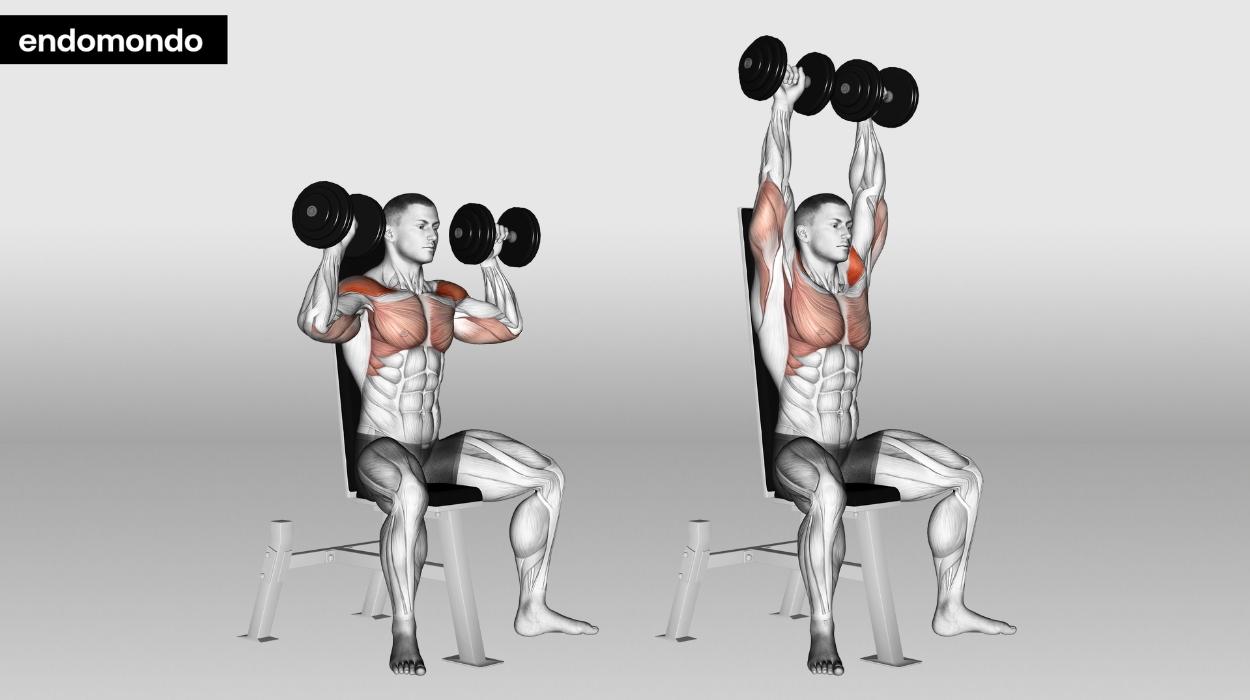Are you motivated to stay fit but unsure if your workout routine is harming more than helping? You’re not alone! In this listicle, we’ll explore 9 popular exercises that could actually be doing more damage than good. From common gym staples to trending fitness moves, we’ll break down how these exercises can strain your body and offer safer alternatives. By the end, you’ll be equipped with knowledge to choose smarter workouts that promote long-term health and well-being. Let’s dive in and keep your body happy and strong!
1) Running on Hard Surfaces – Constant pounding on concrete can lead to joint pain and stress fractures over time
Running on hard surfaces like concrete may seem like an accessible and convenient way to get your daily cardio in, but the impacts on your body can be quite severe. Every step taken on these unforgiving surfaces sends shockwaves through your joints, putting stress on the knees, ankles, and hips. Over time, this constant pounding can lead to a host of issues such as chronic joint pain, which can severely hinder your ability to stay active.
While the benefits of running are numerous, it’s essential to mitigate the risks by considering the following:
- Choose Softer Surfaces: Whenever possible, opt for trails, grass, or tracks that offer better shock absorption.
- Use Proper Footwear: Invest in running shoes with adequate cushioning to help reduce the impact on your joints.
- Cross-Train: Incorporate low-impact exercises such as cycling or swimming to give your joints a much-needed break from the repetitive stress of running.
| Potential Issues | Description |
|---|---|
| Joint Pain | Can lead to chronic discomfort in knees and hips. |
| Stress Fractures | Micro-traumas that can develop into fractures, requiring rest and rehabilitation. |
| Tendonitis | Inflammation of tendons due to repetitive strain. |

2) Sit-Ups – This classic abdominal exercise can strain your lower back and neck, leading to discomfort and injury if done incorrectly
While sit-ups have long been a staple in fitness routines, they can often lead to unwanted strain on both the lower back and neck. This classic move, meant to engage the core, requires the body to roll up from a supine position, which can compromise form if not done correctly. The result? You may end up favoring your neck or rounding your back, especially when fatigue sets in.
Consider these potential pitfalls of sit-ups:
- Improper Form: Relying on momentum rather than muscle strength can lead to injury.
- Neck Strain: Pulling on your head with your hands can cause discomfort.
- Lower Back Pain: Curling the spine increases pressure on the lumbar region.
For those seeking effective core strengthening methods, alternatives like planks or bicycle crunches provide safer options. These exercises engage multiple muscle groups without subjecting your back and neck to undue stress. Explore new ways to build core strength while keeping your body happy and healthy!

3) Heavy Deadlifts – While they build strength, improper form can wreak havoc on your spine and lower back
Deadlifts are often touted as the king of strength-building exercises, targeting multiple muscle groups and enhancing overall power. However, the allure of lifting heavy can sometimes lead enthusiasts to overlook proper technique in favor of increasing weights. As a result, many find themselves struggling with injuries that could have been easily avoided. The spine, especially, is at risk when form takes a back seat, leading to conditions like herniated discs and chronic lower back pain.
To maximize the benefits and minimize the risks associated with heavy deadlifts, consider these key points:
- Start Small: Begin with lighter weights to master the form.
- Engage Your Core: A strong core stabilizes your spine during lifts.
- Keep a Neutral Spine: Avoid rounding or hyperextending your back throughout the exercise.
If you’re unsure about your form, incorporating regular assessments with a trainer or using video analysis can be invaluable. Remember, it’s not just about how much you can lift, but how safely you can do so to prevent long-term damage.

4) Overhead Presses – Heavy lifting overhead without proper technique can cause shoulder injuries and strain your upper back
While the overhead press is a staple for building shoulder and upper body strength, improper form can quickly turn this exercise into a recipe for disaster. When pushing heavy weights overhead, many people may unknowingly arch their backs or elevate their shoulders, leading to undue strain. This can result in debilitating injuries, particularly to the shoulders and upper back. It’s crucial to prioritize form over weight to avoid these pitfalls.
Consider these critical points to enhance safety while performing overhead presses:
- Engage your core: A strong core stabilizes your spine, helping you maintain proper posture throughout the lift.
- Keep your elbows slightly in front: This position reduces stress on the shoulder joints and promotes better mechanics.
- Control the movement: Avoid using momentum to lift weights. Focus on a slow and steady press to protect your joints.
| Common Mistakes | Consequences |
|---|---|
| Overarching the back | Lower back strain |
| Raising shoulders during press | Shoulder injuries |
| Pushing too heavy too fast | Increased risk of catastrophic injury |

5) Long-duration Cardio – Excessive running or cycling can lead to muscle imbalances and overuse injuries, especially without strength training
Though popular for weight loss and cardiovascular health, extended sessions of running or cycling can have a paradoxical effect on your body. Engaging in extensive cardio without balancing it with strength training may promote muscle imbalances. Runners often develop exceptionally strong quads while their hamstrings lag behind, leading to an imbalance that increases the risk of injuries. Cyclists may experience similar issues, where excessive pedaling strengthens the hip flexors but neglects surrounding muscle groups, creating an unstable base.
Moreover, long-duration cardio workouts can contribute to overuse injuries such as tendinitis and stress fractures. These injuries occur when the body doesn’t have adequate recovery time or fails to strengthen the muscles that support the joints. Incorporating strength training into your routine can help mitigate these risks. Consider integrating exercises that target:
- Core Stability: Planks and Russian twists to support your posture.
- Leg Balance: Single-leg deadlifts to ensure even strength distribution.
- Upper Body: Push-ups and rows to maintain a balanced physique.
The reality is that cardio has its place in fitness, but without complementary strength training, you’re paving the way for eventual wear and tear. It’s essential to strike a balance to enjoy the benefits while minimizing the potential for injury.

6) High-Impact Aerobics – The repetitive nature puts stress on your joints, increasing the risk of injury and long-term wear
Consider the following points about the risks associated with high-impact aerobics:
- Joint Stress: Repeated high-impact moves can lead to inflammation and pain in your joints.
- Wear and Tear: Over time, the cartilage cushioning your joints may degrade, resulting in conditions like osteoarthritis.
- Injury Risk: Sprains, strains, and stress fractures are common among enthusiasts of high-impact aerobics.
Additionally, a deeper dive into the statistics highlights how prevalent joint injuries are among enthusiasts. The following table illustrates some common injuries alongside their estimated occurrence:
| Injury Type | Estimated Occurrence (%) |
|---|---|
| Patellar Tendonitis | 30% |
| Shin Splints | 20% |
| Ankle Sprains | 15% |
| Hip Strains | 10% |
While breaking a sweat is essential for health, it’s crucial to weigh the benefits against these potential risks. Exploring low-impact alternatives can help you maintain fitness while safeguarding your joints from unnecessary stress.
7) Bench Press – If done with poor form or too much weight, it can lead to shoulder issues and wrist strain
The bench press is often touted as a cornerstone of strength training, but when done incorrectly, it can wreak havoc on your joints. Many individuals lift weights that are simply too heavy or adopt improper form, leading to unnecessary strain on the shoulders and wrists. This can be particularly problematic as these areas are prone to injury, and even minor misalignments can escalate into serious long-term issues.
To safeguard your body while bench pressing, consider the following tips:
- Focus on form: Always prioritize proper technique over the amount of weight you’re lifting. Ensure your back is flat against the bench and your feet are firmly planted on the ground.
- Warm-up properly: Engage in dynamic stretches and lighter weight sets before diving into your main sets to prepare your muscles and joints.
- Limit weight increases: Gradually increase the weight you lift to avoid undue stress on your shoulders and wrists.
Below is a comparison of common bench press errors and their potential consequences:
| Common Error | Potential Consequence |
|---|---|
| Using a wide grip | Increases shoulder strain |
| Allowing the bar to bounce | Risk of wrist injury |
| Overextending elbows | Risk of injury to joint structures |

8) Kipping Pull-Ups – While popular in CrossFit, the momentum can cause shoulder instability and increase the risk of injury
Kipping pull-ups are a staple in the CrossFit community, celebrated for their explosive nature and ability to boost workout intensity. However, the mechanics behind this movement can lead to unintended consequences for your shoulders over time. By relying on momentum rather than controlled strength, athletes may compromise their joint stability, increasing the likelihood of injury.
Here are some risks associated with kipping pull-ups:
- Shoulder Dislocation: The rapid swinging motion can place undue stress on the shoulder joint, making it susceptible to dislocation.
- Tendonitis: Repetitive strain from kipping with improper form can irritate shoulder tendons, leading to painful tendonitis.
- Impingement Syndrome: The dynamic nature can cause shoulder impingement, where tendons are pinched during movement, creating discomfort and limiting your range of motion.
Instead of kipping pull-ups, consider incorporating alternative movements that promote strength while minimizing injury risk:
| Alternative Exercise | Benefits |
|---|---|
| Strict Pull-Ups | Builds strength without momentum |
| Negative Pull-Ups | Focuses on the lowering phase, enhancing control |
| Resistance Band Pull-Ups | Provides assistance while developing strength |

9) Static Stretching Before Workouts – Holding stretches too long can decrease muscle strength and increase the risk of strains when muscles are cold
While incorporating static stretching into your warm-up routine may seem like a good idea, holding those stretches for long durations can actually hamper your workout performance. When your muscles are cold, prolonged static stretches might temporarily weaken them, decreasing overall muscle strength. This can lead to inadequate muscle activation when you need it most, particularly during high-intensity or strength-based exercises.
Moreover, the risk of strains increases significantly when focusing on static stretches just before engaging in physical activities. Instead of stretching for too long, consider incorporating a dynamic warm-up that activates your muscles and prepares them for action. Here are a few alternatives to consider:
- Leg Swings: Dynamic leg swings help mobilize your hip joints and improve blood flow.
- Arm Circles: Moving your arms in circular motions can warm up your shoulders without compromising strength.
- Lunges with a Twist: This exercise heats up your legs while engaging your core through rotation.
By opting for dynamic movements over static holds, you’ll effectively prepare your body for the workout ahead while minimizing the potential for injury. Save static stretching for after your exercise routine to promote flexibility and aid recovery instead!
Key Takeaways
And there you have it—9 popular exercises that might be doing more harm than good! Remember, staying fit doesn’t have to mean following the crowd. Always listen to your body, prioritize proper form, and consider alternative workouts that support your overall well-being. Your fitness journey should empower you, not leave you in pain. Stay safe, stay informed, and enjoy your workouts!





